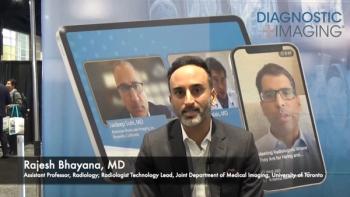
Rules of engagement: PACS consultants can be used effectively
Other than the few medical centers who pioneered the migration to PACS, most hospitals lack the internal expertise to develop a comprehensive digital imaging business plan, create medical imaging architectures, select vendors, and implement PACS.Many
Other than the few medical centers who pioneered the migration to PACS, most hospitals lack the internal expertise to develop a comprehensive digital imaging business plan, create medical imaging architectures, select vendors, and implement PACS.
Many processes such as vendor selection and implementation are done only once, and developing such one-time experience in-house would be wasteful and inefficient, according to Wesley N. Bridgewater, senior business director in the department of radiology at Children's Hospital Medical Center (CHMC) in Cincinnati.
"It is highly unlikely that an inexperienced hospital-based group undertaking their first and only PACS project will be able to match the depth of a well-organized consulting group with prior experience," he said.
Before selecting a consultant, however, Bridgewater said the hospital needs to ask itself a few questions:
- What level of experience does the organization have with similar projects?
- Where does the project leadership reside -- in radiology or in information services?
- How well does the organization know its current workflow? and
- What resources does the institution have for writing a detailed business plan?
Then, once consultants are engaged, the organization can find ways to maximize effectiveness and minimize expense by following a few of the guidelines used by CHMC.
"Hospital leadership should dictate the consultants' mandate," Bridgewater said. "The organization must clearly state in writing its expectations of the consultant before work begins."
CHMC used the following rules of engagement during its consulting relationship with First Consulting Group:
- Consultant to provide weekly status reports to measure and track progress against deliverables and identify and elevate any issues;
- Consultant to work side by side with house staff to develop skills necessary to manage PACS after engagement expiration;
- Consultant to meet regularly with CHMC leadership team (i.e., associate director of radiology, chief technician, and radiology administrator) to discuss and refine project progress and address issues;
- Consultant to maintain all project documentation, including formal deliverables, status reports, meeting notes, and work plan revisions;
- Consultant to participate in quality assurance reviews to realign resources or fine-tune efforts;
- Consultant to clearly communicate billing process.
Institutions are likely to find a relationship with a PACS consultant indispensable. Since PACS technology and industry alliances are constantly changing, consultants can energize a PACS project by providing unique resources, including deep installation expertise, a methodology for fast-tracking the initiative, and an address book bulging with industry contacts.
Newsletter
Stay at the forefront of radiology with the Diagnostic Imaging newsletter, delivering the latest news, clinical insights, and imaging advancements for today’s radiologists.




























